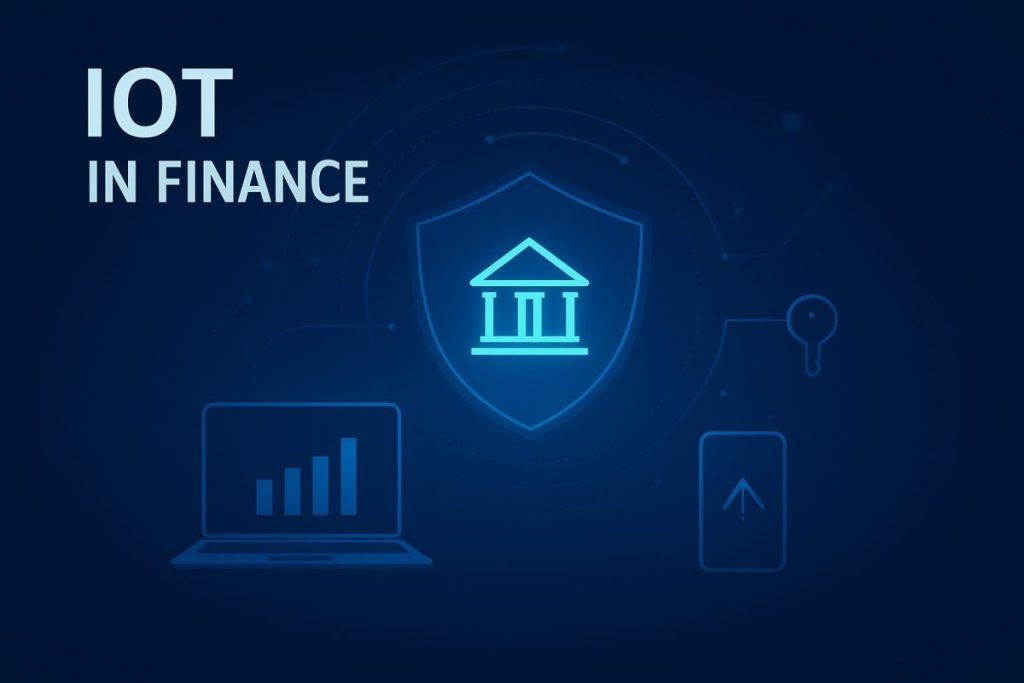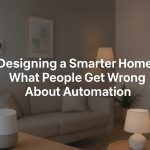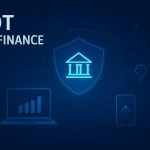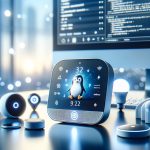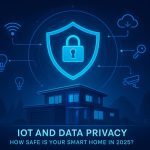Introduction automated online trading
In a world where milliseconds can decide millions, the fusion of Internet of Things (IoT) technology and automated online trading is reshaping global finance. What once relied solely on human judgment now increasingly depends on connected machines, real-time data, and predictive algorithms. From weather sensors influencing agricultural trades to smart logistics systems affecting shipping futures, IoT is quietly transforming how decisions are made in financial markets.
Let’s explore how this powerful combination of automation and connectivity is creating faster, smarter, and more responsive trading ecosystems.
What Is Automated Online Trading?
Automated or algorithmic trading refers to the use of software systems that execute trades automatically based on predefined rules or data inputs. Instead of human traders manually placing orders, algorithms analyze data, detect opportunities, and execute trades instantly.
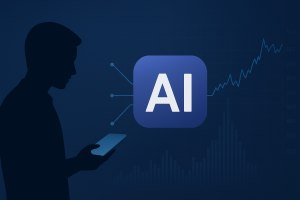
How AI Can Help You with automated Online Trading in 2025
IoT expands this process by adding a new layer of live, real-world data — something traditional financial systems never had before.
For instance, a trading bot could respond to:
- Sudden drops in shipping container movements (via port IoT sensors)
- Changing soil moisture levels from agricultural IoT systems
- Energy grid fluctuations signaling changes in demand
Each of these tiny signals can become part of a massive data ecosystem, influencing trades in commodities, energy, transportation, or even currencies.
The Role of IoT in Financial Data Gathering
Traditional trading systems rely on structured data such as stock prices, interest rates, or financial statements. IoT adds unstructured, real-world context — the kind of information that can’t be found in spreadsheets.
Examples of IoT-Driven Data:
- Agriculture – Soil and weather sensors predict crop yields, affecting commodity prices.
- Transportation – Smart GPS devices track shipments, helping traders anticipate supply chain bottlenecks.
- Energy – Smart meters and industrial sensors reflect real-time consumption and production data.
- Retail – IoT-based inventory systems reveal trends in consumer demand.
This flood of live information gives trading algorithms a broader and more immediate view of economic activity — a clear edge over those relying only on traditional data.
Machine Learning Meets Machine Sensing
The real magic happens when machine learning models process IoT data in real time.
By combining predictive analytics with live sensor inputs, financial systems can:
- Forecast commodity demand more accurately
- Predict market volatility before it becomes visible
- Identify correlations between environmental or logistical data and stock performance
For example, if a network of IoT sensors detects increasing fuel consumption in a particular region, AI trading systems might interpret it as a sign of economic growth — prompting early investment in transportation or energy stocks.
This kind of insight was once impossible. Today, it happens in milliseconds.
The Infrastructure Behind IoT-Powered Trading
Integrating IoT into financial systems requires a combination of several key technologies:
1. Edge Computing
Instead of sending every piece of data to the cloud, edge computing processes it locally, reducing latency. For trading systems, this means real-time decision-making without delays.
2. 5G and Low-Latency Networks
High-speed, low-latency communication enables millions of IoT devices to transmit data instantly — crucial for time-sensitive trading strategies.
3. Secure Cloud Platforms
Cloud infrastructure stores and processes vast IoT data streams securely, enabling scalable analytics for global trading operations.
4. Blockchain and Smart Contracts
Blockchain adds a layer of trust and transparency, automating financial agreements between connected systems and ensuring data integrity across the trading chain.
Real-World Examples
While much of IoT-driven trading happens behind closed institutional systems, a few examples are already visible:
- Energy Trading: IoT sensors in oil fields and power grids feed real-time production and consumption data into automated trading systems, enabling near-instant market reactions.
- Agricultural Markets: Sensor networks monitoring rainfall, temperature, and soil data influence grain and crop futures.
- Shipping and Logistics: Smart container tracking allows traders to anticipate supply chain slowdowns before they appear in economic reports.
- Carbon Credit Markets: IoT-enabled environmental monitoring ensures accurate emission tracking for automated carbon credit exchanges.
These use cases prove one thing — IoT is not just connecting devices; it’s connecting economies.
Challenges and Ethical Concerns
Like any major technological shift, IoT-powered automated trading brings challenges and potential risks.
- ⚠️ Data Accuracy: Faulty sensors or corrupted data can lead to false market signals.
- 🔒 Cybersecurity Risks: IoT devices are vulnerable to hacking, which could be exploited to manipulate data-driven trades.
- ⚖️ Market Fairness: Firms with access to richer IoT data streams could gain disproportionate advantages.
- 💬 Ethical Implications: Allowing algorithms to act on real-world events without human review raises complex moral and legal questions.
To balance innovation and integrity, strong governance frameworks and AI transparency standards will be critical.
The Future of IoT and Automated Trading
The next frontier of finance lies in autonomous, data-driven ecosystems where connected devices, algorithms, and humans collaborate in real time.
- Smart Contracts will execute trades automatically based on verified IoT data.
- Decentralized Finance (DeFi) will merge with IoT to enable peer-to-peer machine transactions.
- Quantum computing could eventually analyze global IoT signals in seconds, creating an entirely new level of market awareness.
In essence, IoT is transforming finance into a living network — a system that senses, thinks, and acts on its own.
Final Insight
The integration of IoT into automated online trading represents one of the most profound shifts in modern economics. It’s not just about faster data; it’s about smarter context. By giving financial algorithms access to the pulse of the physical world, IoT is redefining how value is created, predicted, and exchanged.
In the age of connected machines, markets are no longer just digital — they’re alive.
- Designing a Smarter Home in 2026: What People Get Wrong About Automation
 Smart homes were once science fiction, but today they’re a reality in millions of households. With voice assistants, smart plugs, and automated lighting systems, it’s easy to assume home automation is simply a matter of plugging in a few devices. Yet, many homeowners quickly discover that “smart” doesn’t always mean simple. In this article, we’ll…
Smart homes were once science fiction, but today they’re a reality in millions of households. With voice assistants, smart plugs, and automated lighting systems, it’s easy to assume home automation is simply a matter of plugging in a few devices. Yet, many homeowners quickly discover that “smart” doesn’t always mean simple. In this article, we’ll… - Automated Online Trading: How IoT is Redefining Financial Markets
 Introduction automated online trading In a world where milliseconds can decide millions, the fusion of Internet of Things (IoT) technology and automated online trading is reshaping global finance. What once relied solely on human judgment now increasingly depends on connected machines, real-time data, and predictive algorithms. From weather sensors influencing agricultural trades to smart logistics…
Introduction automated online trading In a world where milliseconds can decide millions, the fusion of Internet of Things (IoT) technology and automated online trading is reshaping global finance. What once relied solely on human judgment now increasingly depends on connected machines, real-time data, and predictive algorithms. From weather sensors influencing agricultural trades to smart logistics… - The Role of Linux in IoT: Powering the Connected World
 The Internet of Things (IoT) is everywhere—from smart homes and wearable devices to industrial automation and self-driving cars. Behind the scenes, one operating system plays a surprisingly dominant role: Linux. Known for its stability, flexibility, and open-source nature, Linux has become the backbone of countless IoT devices and platforms. But what makes Linux so well-suited…
The Internet of Things (IoT) is everywhere—from smart homes and wearable devices to industrial automation and self-driving cars. Behind the scenes, one operating system plays a surprisingly dominant role: Linux. Known for its stability, flexibility, and open-source nature, Linux has become the backbone of countless IoT devices and platforms. But what makes Linux so well-suited… - The Smart Home Revolution in 2025: How IoT is Transforming Everyday Living
 In the past decade, the vision of a truly smart home has moved from futuristic fantasy to everyday reality. As we step into 2025, the Internet of Things (IoT) has matured into a robust ecosystem, connecting appliances, security systems, lighting, and even entertainment devices under one seamless digital roof. The result? Homes that are safer,…
In the past decade, the vision of a truly smart home has moved from futuristic fantasy to everyday reality. As we step into 2025, the Internet of Things (IoT) has matured into a robust ecosystem, connecting appliances, security systems, lighting, and even entertainment devices under one seamless digital roof. The result? Homes that are safer,… - IoT and Data Privacy: How Safe Is Your Smart Home in 2025? – IoT Security
 The smart home revolution has made everyday life more convenient than ever. From voice assistants that control the lights to security cameras that send alerts directly to your phone, connected devices have become part of our daily routines. But with this convenience comes an important question: how safe is your personal data in a world…
The smart home revolution has made everyday life more convenient than ever. From voice assistants that control the lights to security cameras that send alerts directly to your phone, connected devices have become part of our daily routines. But with this convenience comes an important question: how safe is your personal data in a world…
